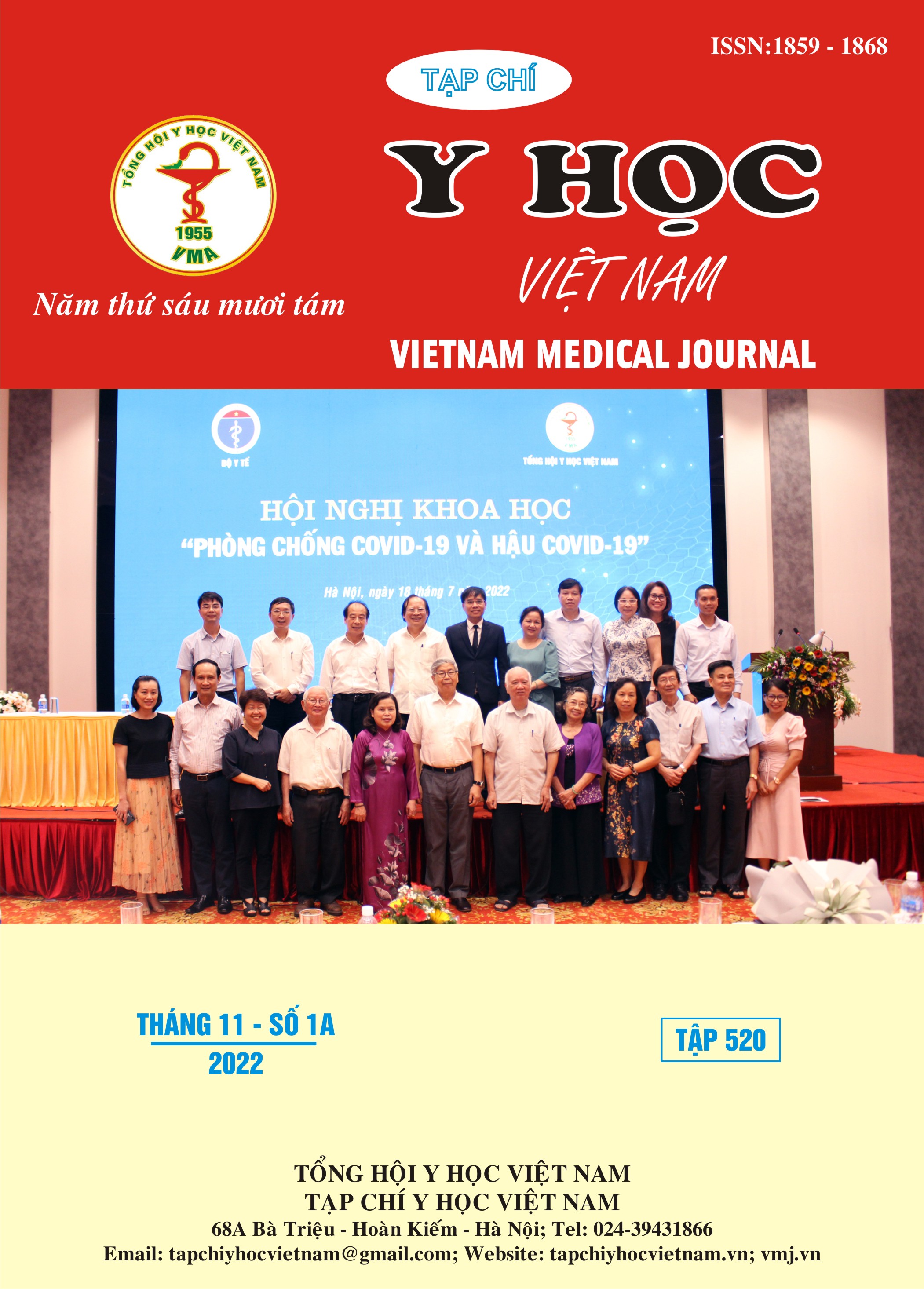CLINICAL CHARACTERISTICS, NEUROLOGICAL IMAGES OF UNRUPTURED INTRACRANIAL ANEURYSMS
Main Article Content
Abstract
Intracranial aneurysm is a common disease. Most aneurysms, especially small aneurysms, do not rupture. The ruptured aneurysm caused subarachnoid hemorrhage. Detecting intracranial aneurysms before this complication occurs so that appropriate monitoring and preventive measures can be taken to limit serious consequences. Objective: This study aims to description of clinical and imaging features of unruptured intracranial aneurysms at Neurology Center - Bach Mai Hospital from July 2021 to May 2022. Methodology: Cross-sectional study of clinical and imaging features of 78 patients with confirmed unruptured intracranial aneurysms. Results: The average age was: 57.7 ± 14.9 years old, with the proportion of women is 59%. The earliest age is 24 years old and the latest is 92 years old, the age group with the highest proportion is 61-70 years old (30.8%). The common symptom of an unruptured intracranial aneurysm is headache, accounting for 29.5% with non-specific feature. The most common site of aneurysm is the internal carotid artery, followed by the anterior communicating artery, the posterior communicating artery, and the vertebral artery. The main morphology of intracranial aneurysms is sac form (97.56%), rhombus form accounting for 2.44%. The average size is 4.56 ± 3.66 mm, in which, the size from 3 - 6.9mm is common (54.88%), the smallest size is 1.8mm, the largest is 27mm. Conclusions: In our study, the average age was 57.7 ± 14.9 years old. The majority of unruptured intracranial aneurysms were discovered randomly (67.9%). The most common symptom of an unruptured intracranial aneurysm was a headache with nonspecific feature (29.5%). The most common location is the internal carotid artery with 70.72%, the sacral aneurysm is the main (97.56%). The average size of aneurysms was 4.56 ± 3.66 mm, with small aneurysms accounting for the majority (85.37%).
Article Details
References
2. Makoto Sonobe, Tomosato Yamazaki, et al. Small Unruptured Intracranial Aneurysm Verification Study. Stroke. 2010;41:1969-1977.
3. David O. Wiebers (1998). Unruptured Intracranial Aneurysms - Risk of Rupture and Risks of Surgical Intervention. N Engl J Med 1998; 339:1725-1733.
4. Ronkainen A, Miettinen H, Karkola K, et al. Risk of harboring an unruptured intracranial aneurysm. Stroke 1998; 29: 359-62.
5. Harada, K., Fukuyama, K., Shirouzu, T. et al. Prevalence of unruptured intracranial aneurysms in healthy asymptomatic Japanese adults: differences in gender and age. Acta Neurochir 155, 2037–2043 (2013)
6. Iwamoto H, Kiyohara Y, Fujishima M, Kato I, Nakayama K, Sueishi K, Tsuneyoshi M (1999) Prevalence of intracranial saccular aneurysms in a Japanese community based on a consecutive autopsy series during a 30-year observation period. The Hisayama study. Stroke 30:1390–1395.
7. Igase K, Matsubara I, Igase M, Miyazaki H, Sadamoto K (2012). Initial experience in evaluating the prevalence of unruptured intracranial aneurysms detected on 3-tesla MRI. Cerebrovasc Dis 33:348–353.
8. Ujiie H, Sato K, Onda H, Oikawa A, Kagawa M, Takakura K, Kobayashi N (1993) Clinical analysis of incidentally discovered unruptured aneurysms. Stroke 24:1850–1856.
9. The UCAS Japan Investigators (2012). The Natural Course of Unruptured Cerebral Aneurysms in a Japanese Cohort. N Engl J Med 2012; 366:2474-2482.


